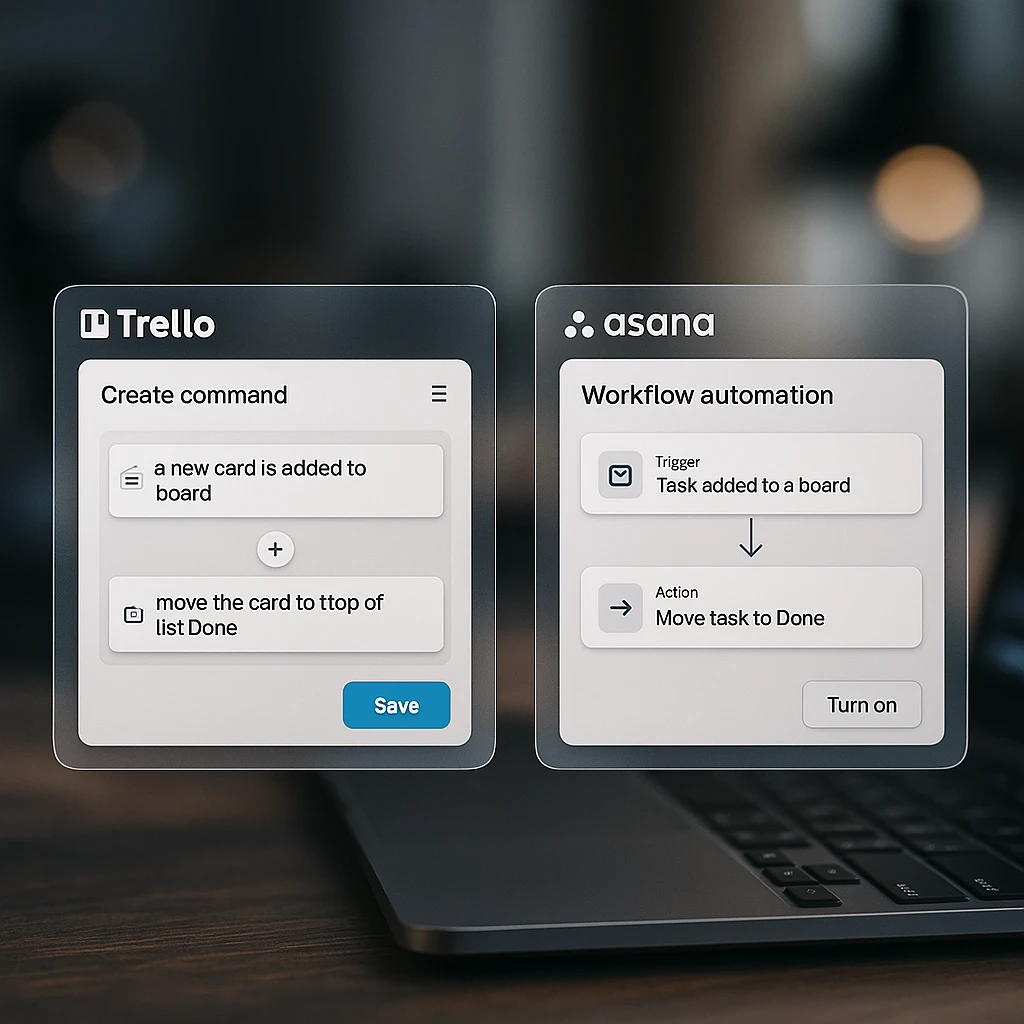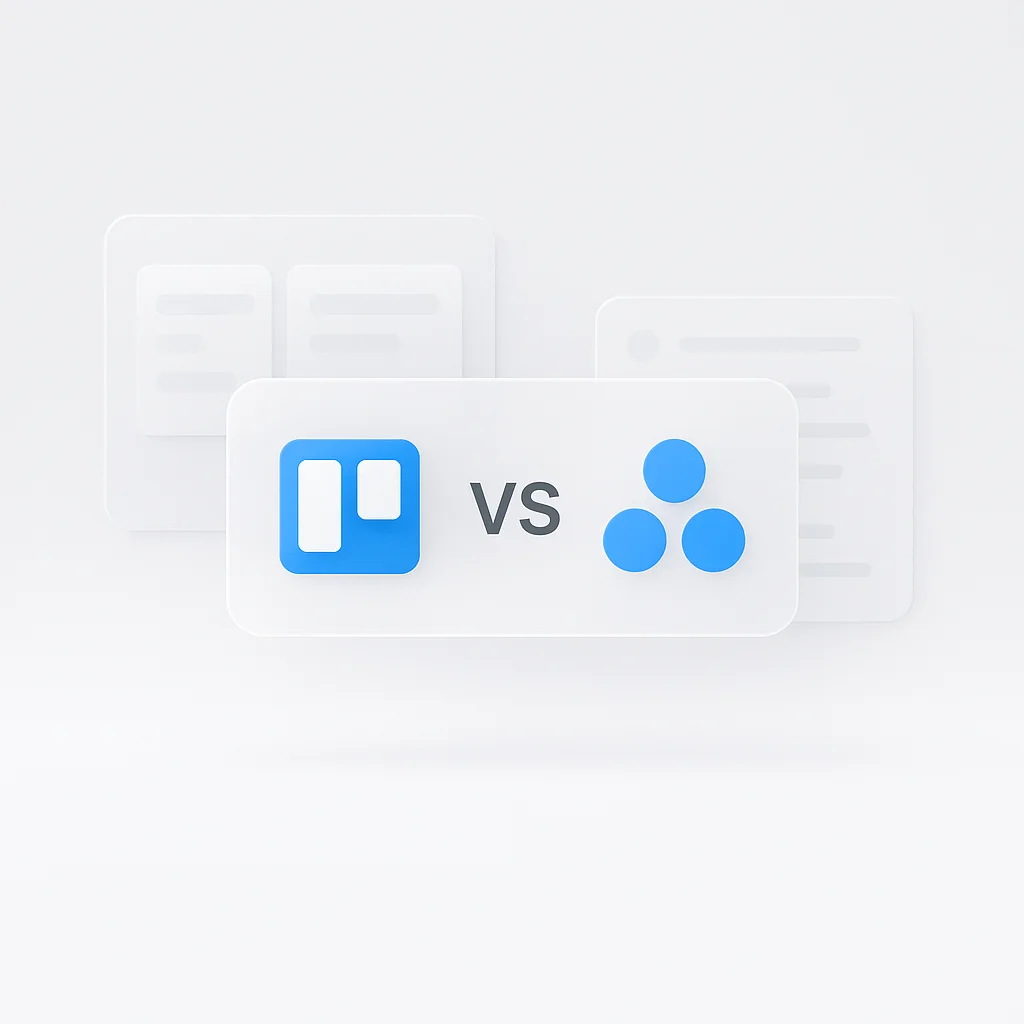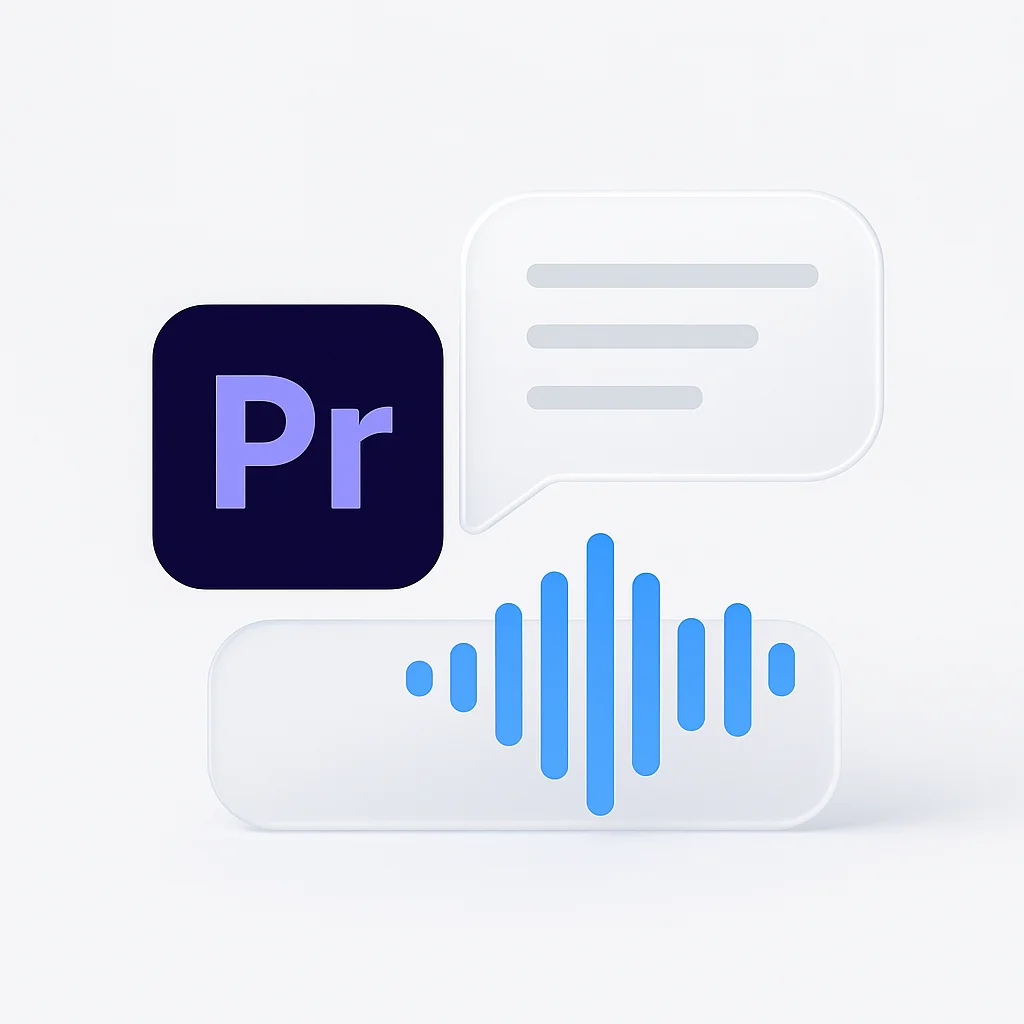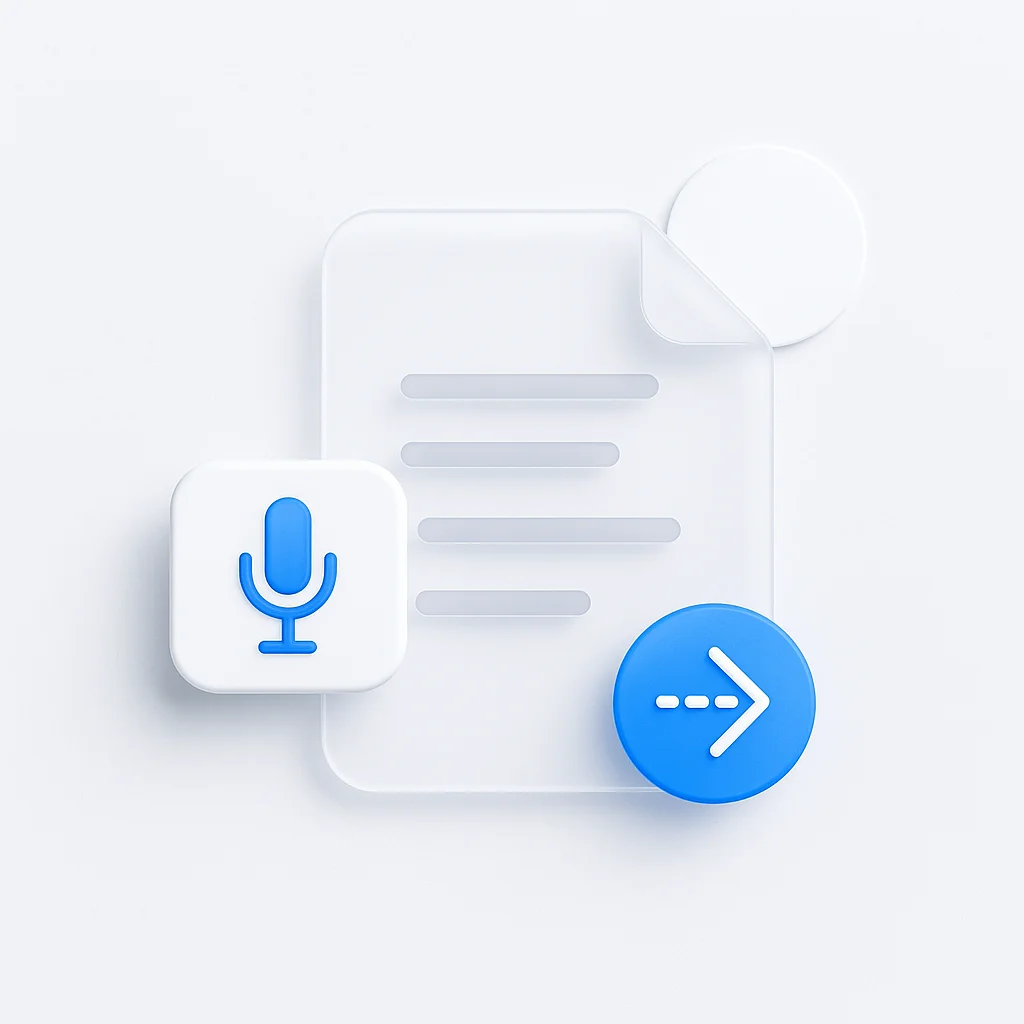In 2025, the project management tool you choose is the central nervous system of your team. It dictates how you communicate, plan, and execute. The two most dominant names in this space are Trello and Asana. One is a master of visual simplicity and flexibility; the other is a feature-rich powerhouse built for complex workflows. But which one will actually help your team get work done faster and with less friction?
Generic feature lists are not enough. To find the true winner, we put them through a rigorous, head-to-head test based on real-world professional workflows. This guide delivers the definitive verdict on which tool is best for launching products, running marketing campaigns, and managing development sprints. For those looking to streamline their scheduling process, an AI scheduler can be a powerful addition to your toolkit.
The Final Verdict in 10 Seconds: Which Tool Should You Choose?
| If you are a... | Your Best Choice is... | Why? |
|---|---|---|
| Small Team or Solopreneur | Trello | Unbeatable simplicity, a visual Kanban-first approach, and a very generous free tier. |
| Growing Company or Enterprise | Asana | Built for scale with advanced features like Portfolios, Goals, and robust reporting. |
| Marketing or Creative Team | Asana | Superior for complex campaigns with Timeline views, dependencies, and approval workflows. |
| Developer using Agile/Scrum | Trello | Its core is a pure, effective Kanban board, making it perfect for sprint management. |
The Head-to-Head Test: Real-World Workflow Comparisons
To determine the true winner between Trello vs Asana, we conducted comprehensive tests across the most common professional use cases. Here’s what we discovered when both platforms were pushed to their limits.
Workflow 1: The Small Business Product Launch
🚀 The Task
We set up a new project for a "New Website Launch," created 15 core tasks, assigned them to 3 team members, set deadlines, and tracked progress from start to finish.
🔸 Trello's Performance
- Setup Speed: A new board was ready in under a minute.
- Ease of Use: Drag-and-drop cards felt intuitive and visual.
- Progress Tracking: Moving cards from "To Do" to "Done" provides instant visual status.
- Collaboration: Comments and checklists are simple and effective for focused tasks.
🔹 Asana's Performance
- Setup Speed: More initial setup required (create project, choose view, add sections).
- Ease of Use: Steeper learning curve with more options and sub-tasks.
- Progress Tracking: Multiple views (List, Board, Timeline) offer powerful ways to see status.
- Collaboration: Granular control over assignments, dependencies, and task approvals.

Workflow 2: The Marketing Campaign
📅 The Task
We planned a quarterly content marketing campaign. The goal was to map out blog posts, social media updates, and video content, ensuring tasks were dependent on each other (e.g., a blog post must be 'Done' before social promotion can begin).
🔸 Trello's Performance
- Planning: Good for brainstorming with cards. Calendar Power-Up helps visualize dates.
- Dependencies: Hard to manage. Requires workarounds like linked cards or checklists.
- Campaign Overview: Difficult to get a high-level timeline view of the entire campaign.
- Approvals: Managed via comments or moving cards; lacks a formal approval step.
🔹 Asana's Performance
- Planning: The Timeline view is a game-changer for mapping out campaigns over time.
- Dependencies: Natively supported. A task can be blocked until another is completed.
- Campaign Overview: Portfolio view allows managers to see the status of multiple campaigns at once.
- Approvals: Formal "Approval" tasks streamline the feedback process.
When providing feedback on creative assets in Asana, a wall of text can be inefficient. Instead, a team member can record their screen with ScreenApp to give visual, contextual feedback and simply paste the link in a task comment.
Workflow 3: The Developer’s Agile Sprint
💻 The Task
We managed a two-week agile sprint using a classic Kanban workflow: a backlog, a 'To Do' list for the current sprint, 'In Progress', 'In Review', and 'Done' columns.
🔸 Trello's Performance
- Board Flexibility: The board is a blank canvas, perfectly adaptable to any Agile ceremony.
- Simplicity: No unnecessary features get in the way of the core sprint workflow.
- WIP Limits: Can be easily implemented with list rules or visual cues.
- Integrations: Excellent integrations with GitHub, Jira, and other developer tools.
🔹 Asana's Performance
- Board Flexibility: The Board view works well but feels like one of many options, not the central focus.
- Simplicity: Can feel over-engineered for a simple sprint board, with extra fields and properties.
- WIP Limits: Possible to set up but not as intuitive as Trello's visual approach.
- Integrations: Also has strong developer integrations.
According to a 2023 report, about 77% of high-performing projects use project management software, highlighting the critical need to choose the right tool for your methodology.
The Next Frontier: Automation & Integrations
Beyond manual task management, the true power of these tools is unlocked via automation. We tested Trello’s “Butler” against Asana’s “Rules” to see which platform offers more practical automation.

🤖 The Task
We created a rule: "When a card/task is moved to the 'Done' column, automatically post a custom notification to a specific Slack channel."
🔸 Trello Butler Results
- Setup: Extremely intuitive, plain-language rule builder ("when... do this...").
- Power: Surprisingly powerful for a simple interface. Can manage cards, checklists, and labels.
- Execution: The rule triggered instantly and posted a clean message to Slack.
- User Experience: Feels accessible to any user, not just admins.
🔹 Asana Rules Results
- Setup: Also uses a trigger/action format, but with more options and custom field logic.
- Power: More advanced, with multi-step rules and deeper integration with Asana's features.
- Execution: Also triggered instantly with a well-formatted Slack message.
- User Experience: Feels more like a power-user feature, but is extremely capable.
Research from McKinsey shows that automation can boost productivity growth globally by up to 1.4% annually, and using these built-in tool features is a great place to start.
Final Scorecard: Trello vs. Asana in 2025
🏆 Ultimate Performance Scorecard
| Feature | Trello | Asana | Winner |
|---|---|---|---|
| Ease of Use | 9.5/10 | 8/10 | Trello |
| Task Management | 8.5/10 | 9.5/10 | Asana |
| Multiple Project Views | 7/10 | 10/10 | Asana |
| Automation | 8.5/10 | 9/10 | Asana |
| Free Plan Value | 9/10 | 8/10 | Trello |
| Scalability for Large Teams | 7.5/10 | 9.5/10 | Asana |
For a deeper look at team productivity, check out our guide on the best tools for asynchronous collaboration. If you’re looking for more ways to optimize your meetings, explore our list of the top 10 AI meeting managers.
Frequently Asked Questions
For personal task management, Trello is almost always the better choice. Its simplicity, visual board, and excellent free tier make it perfect for managing personal projects, planning trips, or creating a simple to-do list without the overhead of a complex system. For tips on improving your note-taking process, see our guide on [how to take better meeting notes](/blog/how-to-take-better-meeting-notes).
Yes, absolutely. With "Power-Ups" (Trello's version of integrations), you can add calendars, Gantt charts, voting, and more. However, it requires more manual setup to replicate features that Asana offers natively. For projects that are complex from day one, Asana is often a better fit.
The core difference is philosophy. Trello is a flexible, visual Kanban tool that adapts to you. Asana is a more structured work management platform that guides you into a system of projects, tasks, and subtasks with multiple ways to view that work (List, Board, Timeline, Calendar).
Monday.com and ClickUp are often called "Work OS" platforms, aiming to be all-in-one solutions that are even more customizable than Asana. They can be more powerful but also more complex. Trello remains the simplest, while Asana strikes a balance between power and structure. For a comparison of other popular team collaboration tools, check out our [Slack vs. Teams](/blog/slack-vs-teams) article.
Summary: The 2025 Champion Depends on Your Workflow
In the Trello vs Asana showdown, the winner is determined entirely by your team’s needs, size, and workflow complexity.
Trello is the undisputed champion for visual thinkers, small teams, and anyone who values simplicity and flexibility. It’s the perfect tool for getting started quickly and managing projects with a clear, linear flow.
Asana is the premier choice for growing organizations that need structure, power, and visibility across multiple complex projects. Its robust feature set is built to handle dependencies, strategic planning, and detailed reporting at scale. To learn more about optimizing your team’s workflow, read our article on video editing workflow tips.
Our Final Recommendation
- Use Trello for: Agile/Scrum teams, small business projects, personal task management, and visual brainstorming.
- Use Asana for: Complex marketing campaigns, multi-stage product launches, company-wide goal tracking, and detailed project planning.
The true power lies in using the right tool for the right job. And to make either tool more powerful, consider how they can be enhanced. For example, all project kick-off meetings can be made more effective by using an AI meeting note-taker to automatically capture action items and decisions, which can then be seamlessly transferred into your chosen project management tool.



